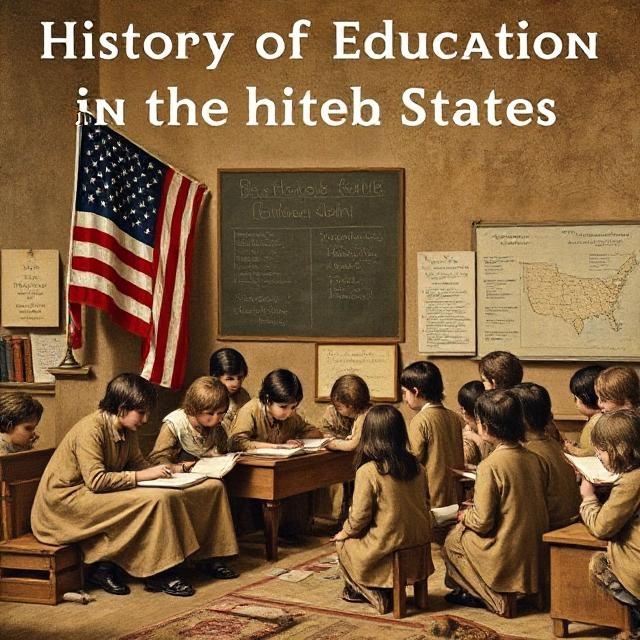The history of education in the United States is a complex narrative that reflects the nation’s evolving values, social structures, and economic conditions. From the early colonial period to the contemporary education system, the development of education has been influenced by various factors, including cultural diversity, social movements, and technological advancements. This article explores key phases in the history of education in the U.S., highlighting significant events, reforms, and challenges.
Colonial Education
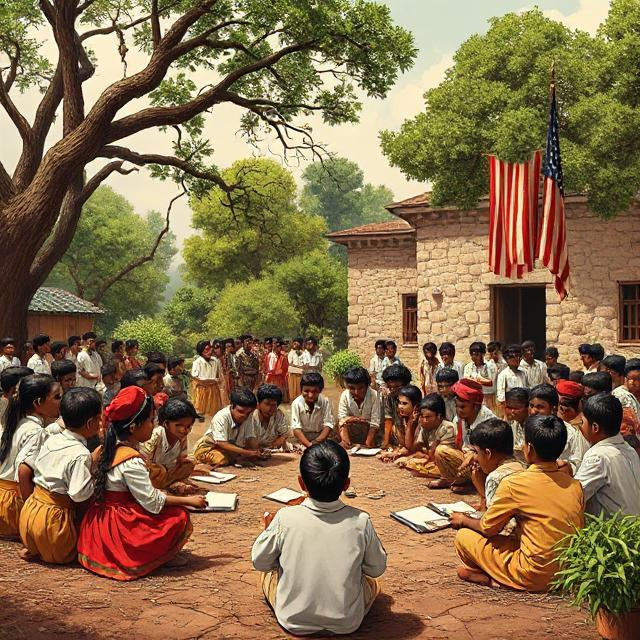
Early Colonial Period
In the early colonial period, education in America was primarily informal and community-based. Families taught their children basic skills, including reading, writing, and arithmetic, often using religious texts. The Puritans in New England placed a strong emphasis on literacy, believing that everyone should be able to read the Bible. The importance of education was seen as a means to ensure moral and civic responsibility.
The First Schools
The first formal schools in the American colonies were established in the 17th century. The Boston Latin School, founded in 1635, is considered the oldest public school in the United States. These early schools were primarily for boys, with girls receiving education at home. The curriculum focused on classical education, including Latin and Greek, as well as religious instruction.
The Role of Religion
Religion played a significant role in early education. Many schools were affiliated with religious institutions, and religious instruction was a central component of the curriculum. The New England Primer, published in the late 17th century, combined religious teachings with basic literacy skills, becoming a widely used textbook in colonial schools. The intertwining of education and religion laid the foundation for moral instruction in American schools.
The 19th Century: Expansion and Reform
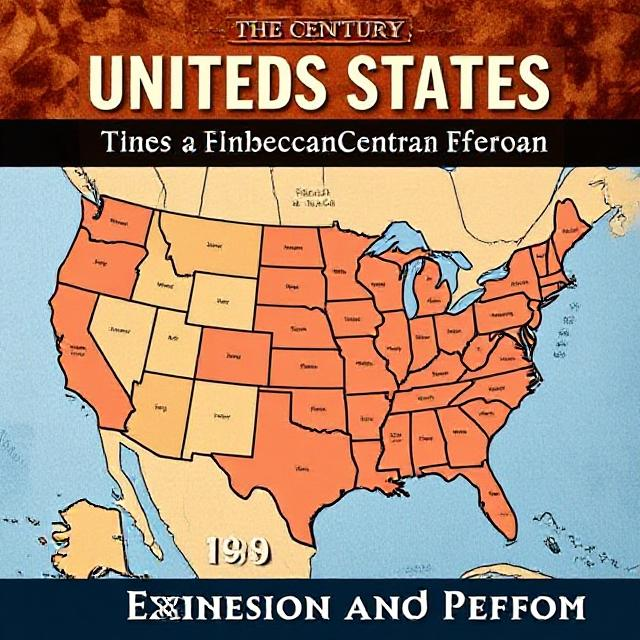
Common School Movement
The 19th century marked a significant shift in American education with the rise of the Common School Movement. Advocated by reformers like Horace Mann, this movement sought to establish free, publicly funded schools accessible to all children, regardless of social class. Mann’s vision emphasized the importance of education as a means of promoting democracy and social equality.
Establishment of Public Schools
By the mid-1800s, many states began to establish public school systems. The goal was to provide a basic education that would prepare students for citizenship and the workforce. These schools emphasized reading, writing, and arithmetic, with a focus on moral and civic education. The establishment of public schools marked a turning point in American education, making it more inclusive and accessible.
Education for All
The Common School Movement also aimed to address educational inequalities. Reformers advocated for the inclusion of girls and marginalized groups in the education system. The first public high schools emerged in the late 19th century, expanding educational opportunities beyond elementary education. These high schools provided a more comprehensive curriculum, including subjects such as science, history, and foreign languages.
African American Education
Despite the progress made, education for African Americans remained a significant challenge. After the Civil War, efforts were made to establish schools for freed slaves, often supported by organizations like the Freedmen’s Bureau. However, access to quality education was limited, particularly in the South, where segregation laws restricted educational opportunities for Black students. The establishment of historically Black colleges and universities (HBCUs) in the late 19th century provided some educational opportunities, but systemic barriers persisted.
The Progressive Era: Educational Reforms

John Dewey and Progressive Education
The early 20th century was marked by the Progressive Education Movement, led by educators like John Dewey. Dewey advocated for experiential learning and emphasized the importance of education in fostering critical thinking and social responsibility. He believed that education should be relevant to students’ lives and connected to their communities, promoting active participation in democratic society.
Curriculum Changes
Progressive education led to significant changes in the curriculum. Schools began to incorporate subjects like art, music, and physical education, promoting a more holistic approach to learning. The focus shifted from rote memorization to active engagement, encouraging students to explore and investigate. Dewey’s ideas influenced the development of child-centered education, emphasizing the needs and interests of students.
Rise of Vocational Education
The Progressive Era also saw the rise of vocational education, aimed at preparing students for specific trades and careers. The Smith-Hughes Act of 1917 provided federal funding for vocational education programs, recognizing the importance of practical skills in the workforce. This legislation marked a significant step toward acknowledging the need for diverse educational pathways beyond traditional academic routes.
Impact on Workforce Development
Vocational education became increasingly important as the economy industrialized. Schools began to offer programs in agriculture, home economics, and technical fields, preparing students for jobs in emerging industries. This shift reflected the changing nature of work in America and the need for skilled labor.
The Mid-20th Century: Desegregation and Expansion
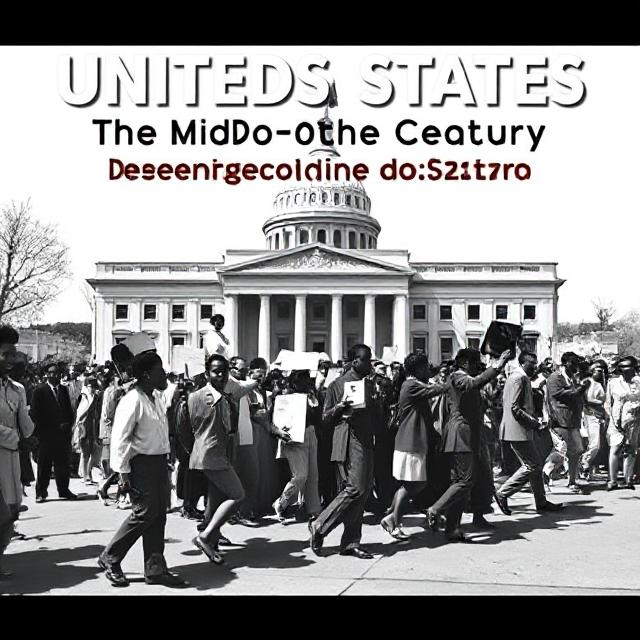
Brown v. Board of Education
The landmark Supreme Court case Brown v. Board of Education (1954) was a pivotal moment in the history of education in the United States. The Court ruled that racial segregation in public schools was unconstitutional, effectively overturning the “separate but equal” doctrine established by Plessy v. Ferguson (1896). This decision marked a significant step toward achieving educational equity.
Impact on Education
The Brown decision led to efforts to desegregate schools across the country. While progress was made, resistance from some states and communities created significant challenges. The Civil Rights Movement of the 1960s further highlighted the need for equitable access to quality education for all students. Activists organized protests and legal challenges to combat segregation and discrimination in schools.
The Expansion of Higher Education
The post-World War II era saw a dramatic expansion of higher education in the United States. The G.I. Bill (1944) provided veterans with access to college education and vocational training, leading to an increase in enrollment in colleges and universities. This expansion contributed to the growth of a more educated workforce, fueling economic growth and innovation.
Community Colleges
The establishment of community colleges in the mid-20th century provided additional pathways for higher education. These institutions offered accessible and affordable education, catering to diverse populations and non-traditional students. Community colleges became vital in promoting adult education and workforce development.
The Late 20th Century: Educational Challenges
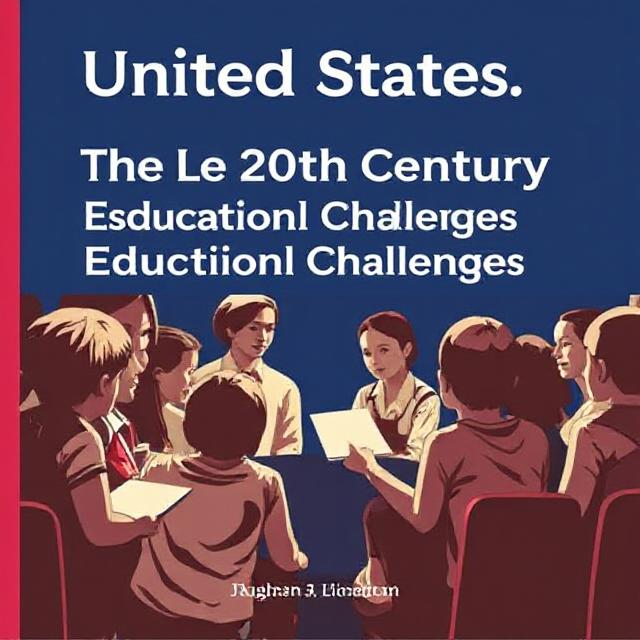
Educational Inequality
Despite advancements in access to education, significant disparities remained. Issues such as funding inequities, racial segregation, and socioeconomic barriers continued to affect educational opportunities for marginalized groups. The War on Poverty initiatives of the 1960s aimed to address these disparities, but challenges persisted. Schools in low-income areas often faced inadequate resources, leading to lower educational outcomes.
Standardized Testing and Accountability
The late 20th century saw the rise of standardized testing as a means of assessing student performance and holding schools accountable. The No Child Left Behind Act (2001) emphasized testing and accountability measures, aiming to improve educational outcomes, particularly for disadvantaged students. While standardized testing provided data on student performance, it also sparked debates about its effectiveness and impact on teaching practices.
The Role of Technology
The integration of technology into education began to transform teaching and learning. Computers and the internet became increasingly prevalent in classrooms, providing new opportunities for research and collaboration. However, the digital divide highlighted disparities in access to technology, particularly in low-income communities. Efforts to bridge this gap became essential in ensuring equitable access to educational resources.
The 21st Century: Innovation and Reform

Focus on Equity and Inclusion
In the 21st century, there has been a renewed focus on equity and inclusion in education. Efforts to address systemic inequalities have gained momentum, with initiatives aimed at improving access to quality education for all students, regardless of their background. Advocacy for policies that promote diversity and inclusion in schools has become a priority for educators and policymakers.
Culturally Responsive Teaching
Culturally responsive teaching has emerged as a pedagogical approach that recognizes and values students’ diverse cultural backgrounds. Educators are increasingly incorporating culturally relevant materials and practices into the curriculum to engage all learners. This approach aims to create an inclusive classroom environment that respects and celebrates diversity.
The Role of Charter Schools and School Choice
The rise of charter schools and school choice has transformed the educational landscape. Advocates argue that these options provide families with greater flexibility and access to quality education. However, critics raise concerns about the potential for increased segregation and the impact on traditional public schools. The debate over school choice continues to shape education policy at local, state, and national levels.
Online and Blended Learning
The COVID-19 pandemic accelerated the adoption of online and blended learning models. Schools were forced to adapt to remote instruction, highlighting both the potential benefits and challenges of technology in education. The experience prompted discussions about the future of education and the need for flexible learning options. As schools transition back to in-person learning, many are incorporating hybrid models that combine traditional and online instruction.
Emphasis on Social-Emotional Learning
In recent years, there has been a growing recognition of the importance of social-emotional learning (SEL) in education. Educators are increasingly focusing on students’ mental health, well-being, and interpersonal skills, recognizing that these factors are critical for academic success. Programs that promote SEL aim to foster resilience, empathy, and effective communication among students.
Conclusion
The history of education in the United States is a testament to the nation’s evolving values and priorities. From its colonial roots to the contemporary focus on equity and innovation, the education system has undergone significant transformations. Understanding this history is essential for addressing current challenges and shaping the future of education in the U.S. As society continues to evolve, so too will the educational landscape, requiring ongoing adaptation and reform to meet the needs of all learners.


